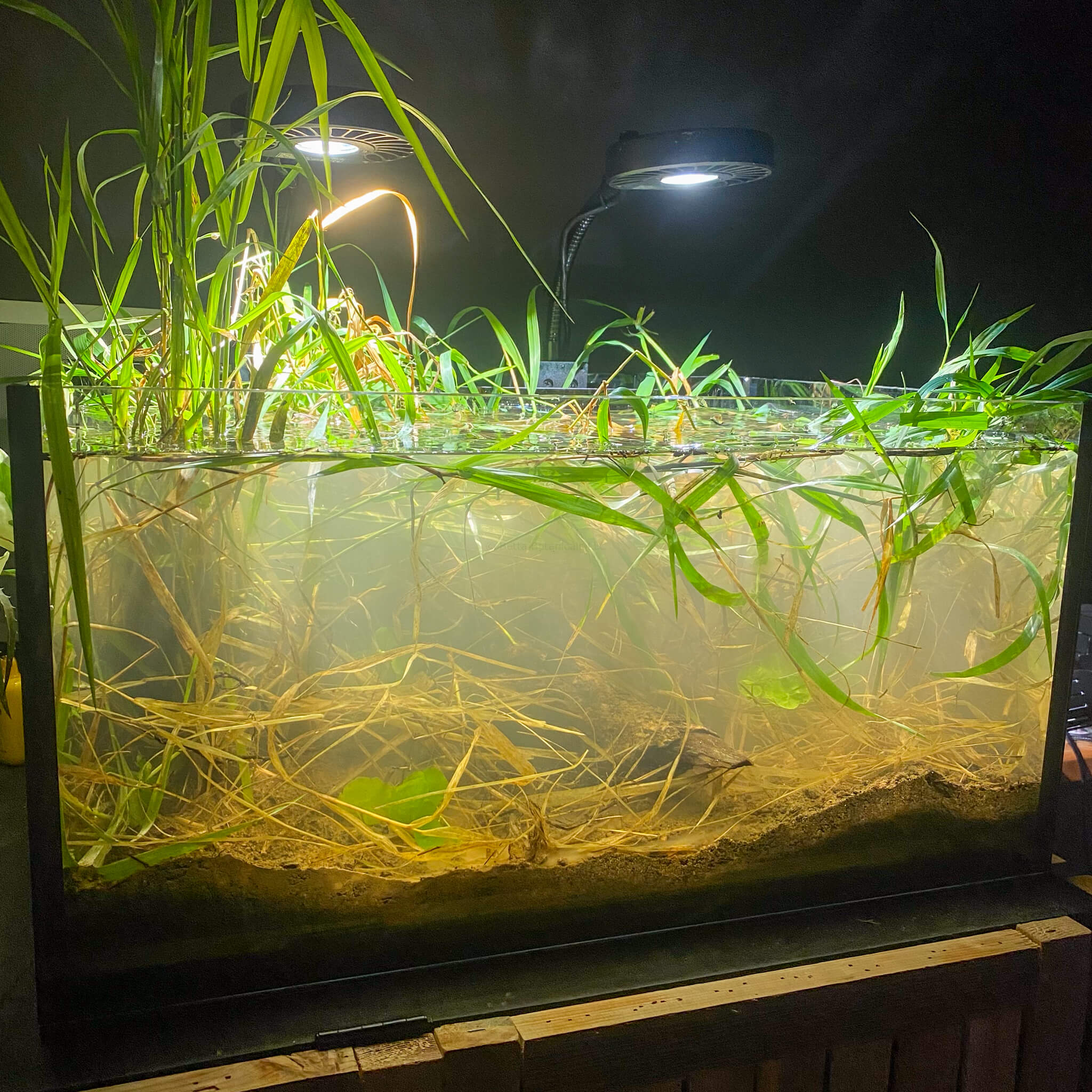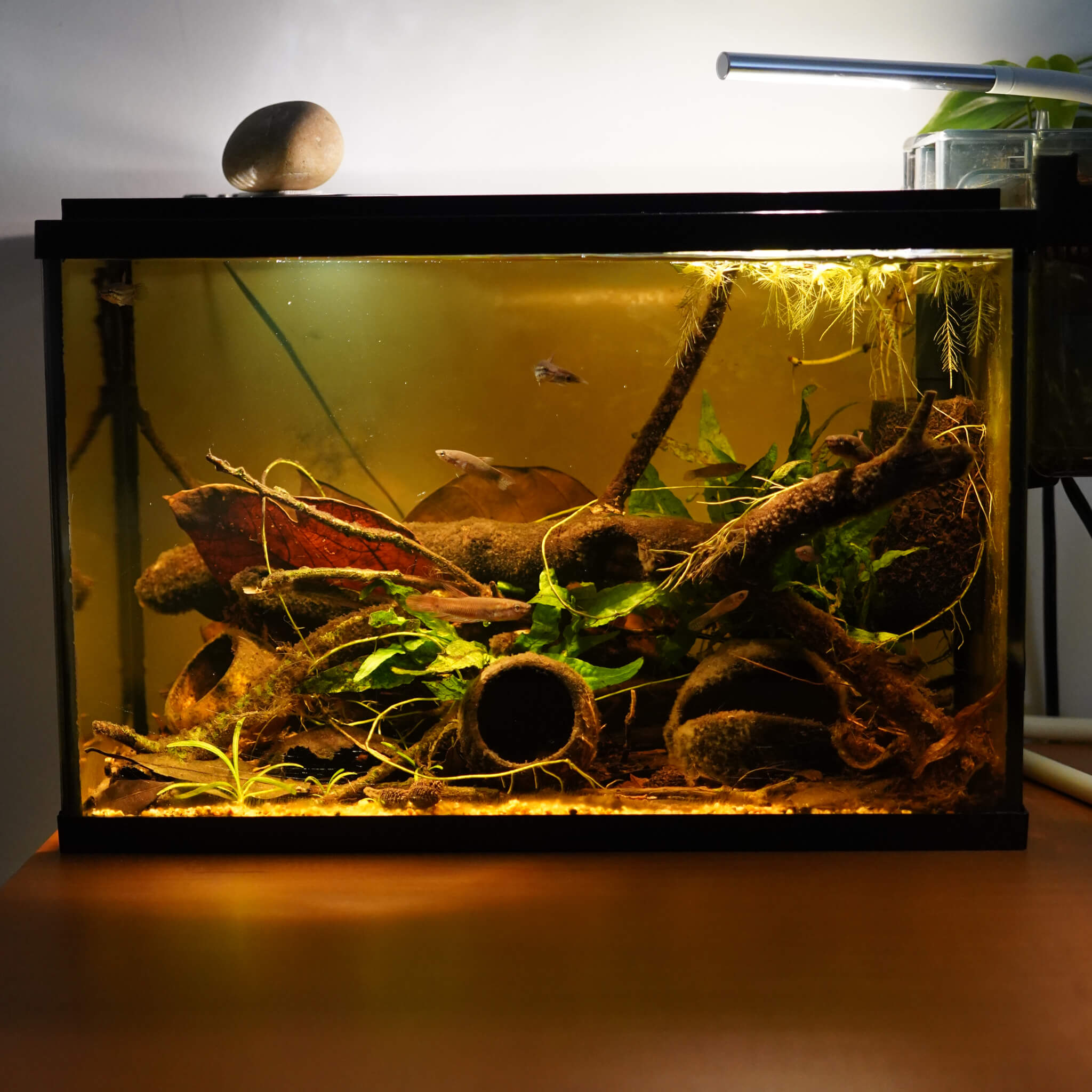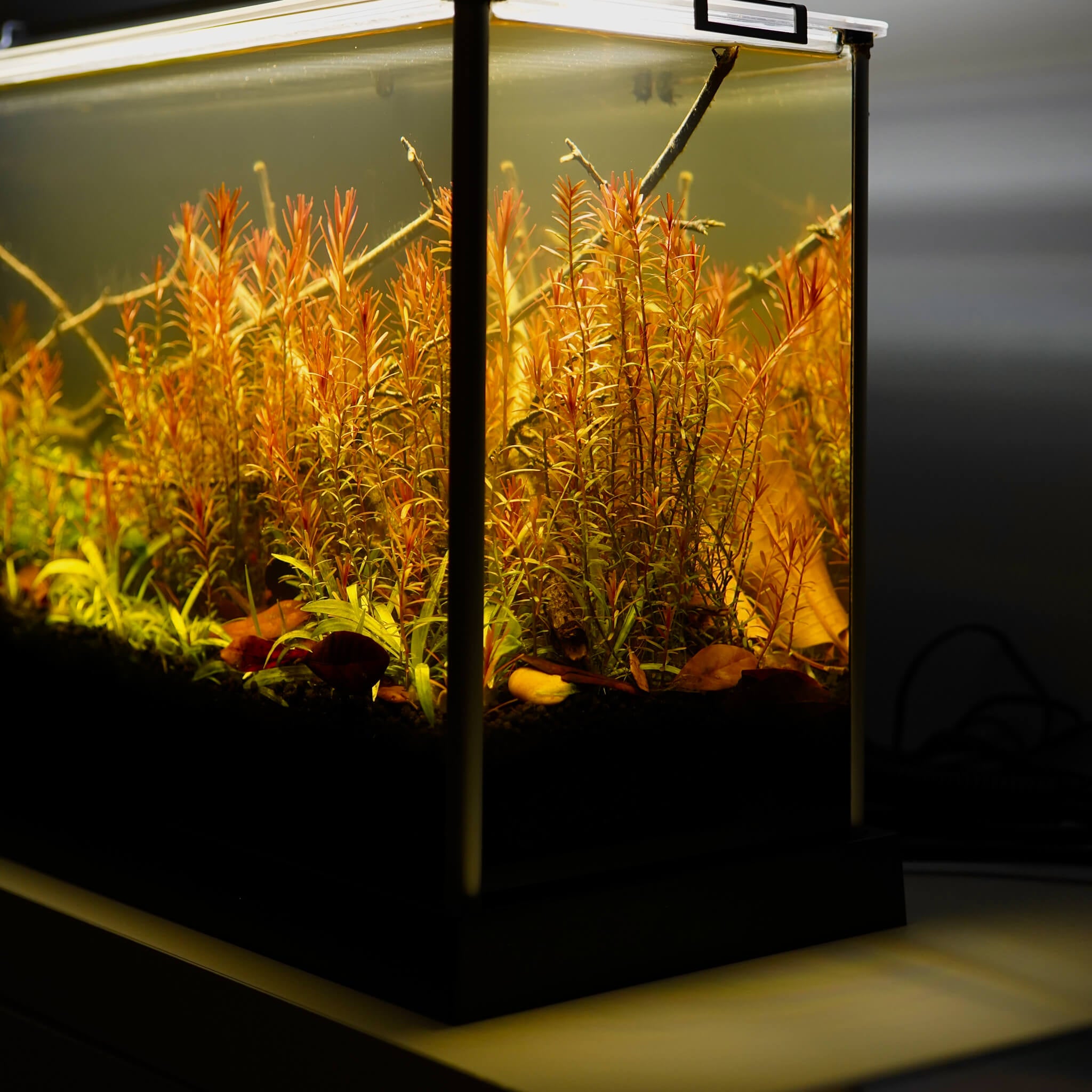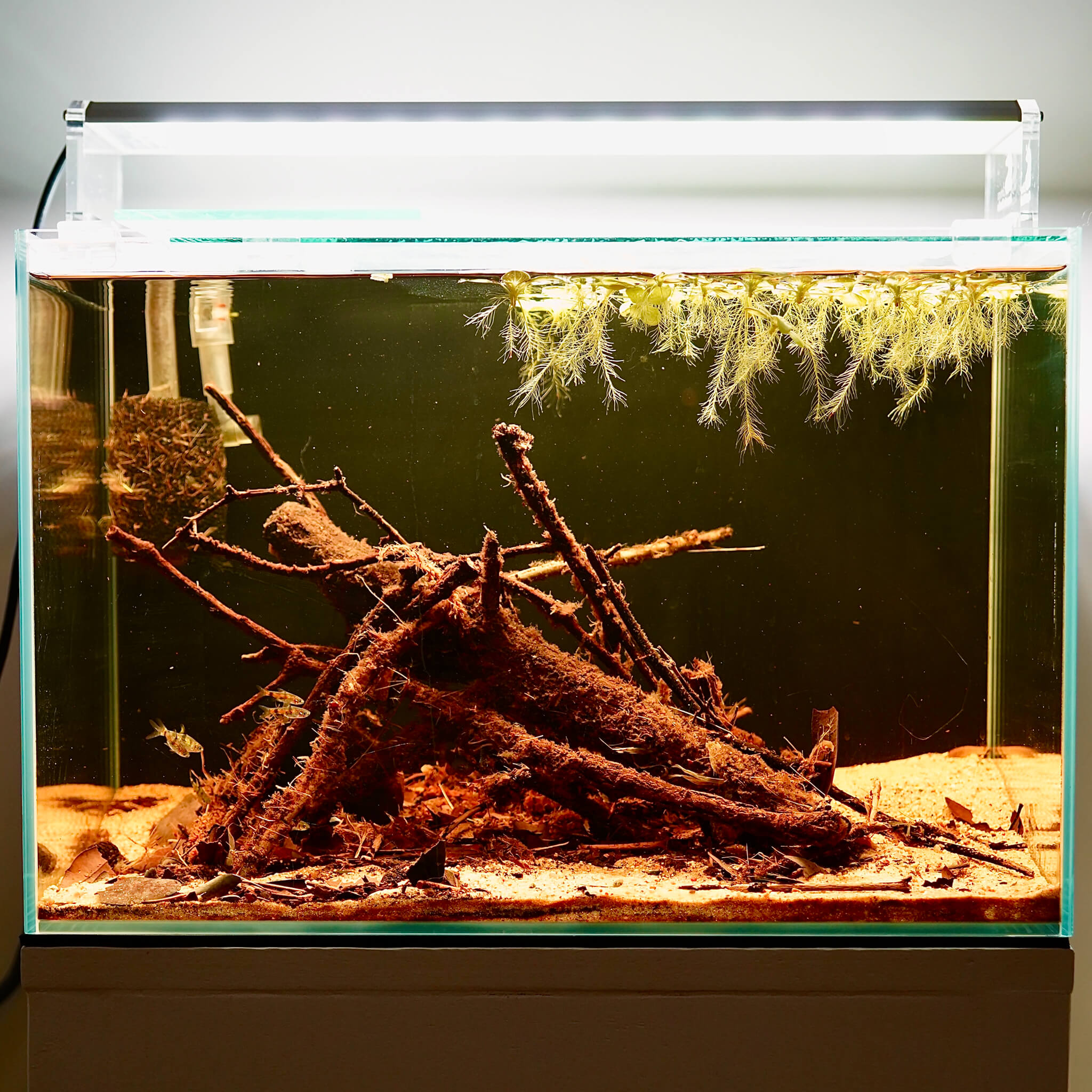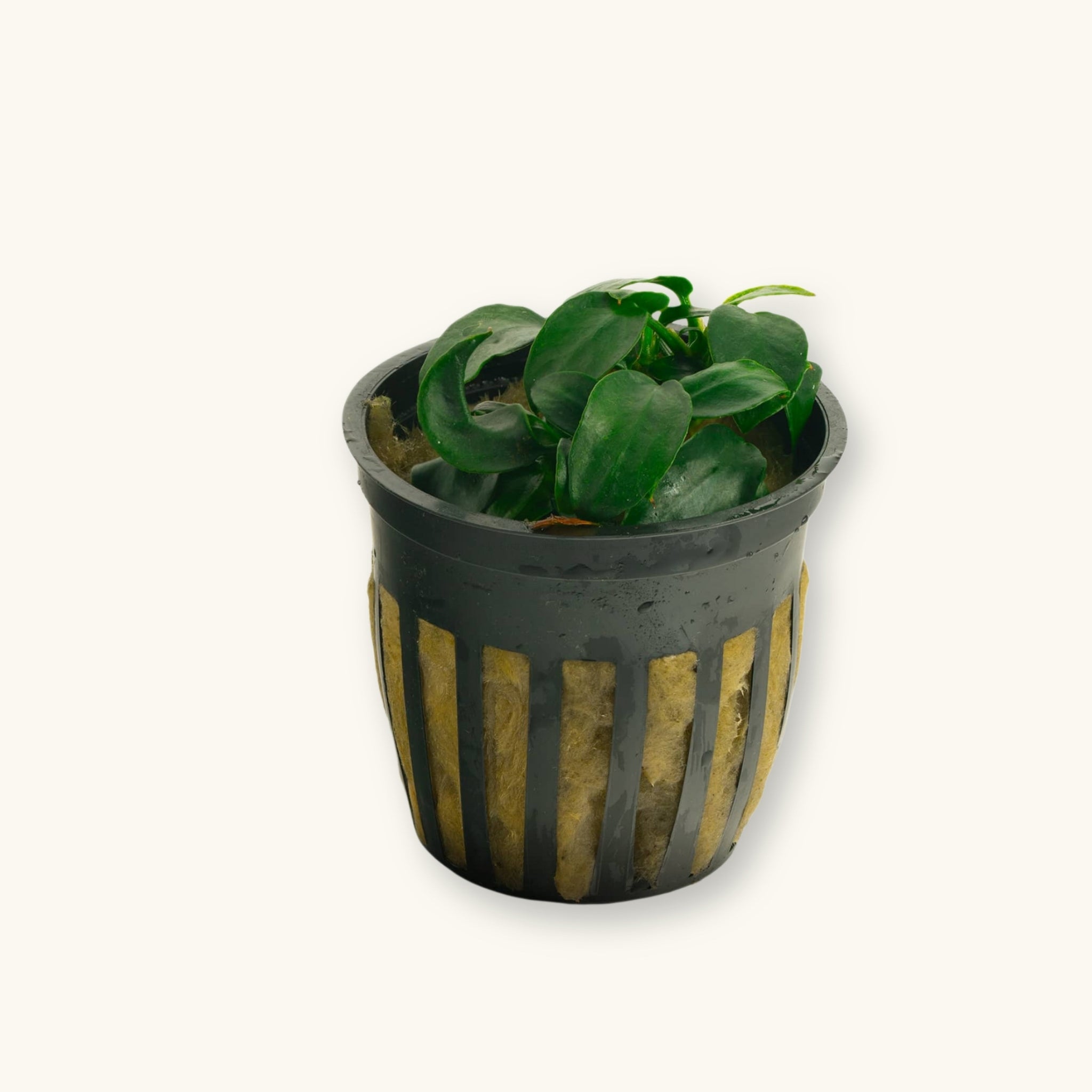
Potted Anubias Nana Petite
Anubias Nana Petite
Scientific Name: Anubias Nana "Petite"
Common Names: Anubias Nana Petite, Small Anubias
Anubias Nana "Petite" is a plant that is easy to grow and a great beginner plant for blackwater, biotope, and botanical method aquarists. It does not require much attention and can be floated in the tank or attached to wood, rock, or other structural pieces of the ecosystem. Its thick and compact structure allows it to be placed even with some aggressive fish.
Anubias nana petite is a rosette plant, which means that all the leaves grow to the same size, and the root system will sit toward the top of the soil or substrate. The difference between nana and nana petite is the leaf size. Nana petite has leaves of about 1 to 2 inches, while anubias nana can get as large as 5 to 8 inches. It is an easy-to-grow plant that prefers not to be rooted in the substrate. We typically float the plant or attach it to a rock or a piece of manzanita driftwood. To attach it, we use a rubber band for two weeks or so, and then remove it. Anubias nana petite is very hardy and can tolerate many aquarium conditions.
Caring for Nana Petite in Blackwater Aquariums
Care Level: Easy
Light: Low
CO2: Not Necessary, but can promote growth
Propagation: Separate by rhizome
Tint Tolerance: Low to High Levels of Tannins, but keep in mind that the more tint you have, the slower the growth of the plant will be.
Native Habitat: West Africa
To propagate anubias nana petite, simply cut the rhizome and leave 4-5 leaves on each section. The rhizome will continue to grow, and the plant will eventually thrive. Under good conditions anubias nana petite will propagate itself by sending out horizontal rhizomes with additional leaves. There is a myth on the internet that if you cut the rhizome of an anubias plant, the sap will make the water toxic; this is not true. We have propagated anubias nana petite in shrimp tanks and have never had a problem.
All Plants may contain snails or snail eggs. We keep them in all of our tanks for the benefits they provide. Our blackwater aquarium plants are provided by H2OPlants in adherence to their Shipping and DOA Policies. Your curated selection will arrive in their packaging separate from your botanical & merch orders.

Potted Anubias Nana Petite
contrast the tint with greenery
While the aesthetic appeal of tinted waters can be quite attractive to us, the recreation of nature—which includes both submerged and emersed plants—is the end goal. Flora helps to improve water conditions, feeding patterns, spawning displays, and territory building.
Aquatic Plant FAQs
DOA Policy
Please ensure that you add a heat pack or cold pack to your orders if temperatures in your area are above 90°F or below 40°F. Click for more info on our DOA Policy.
Are these plants duckweed and snail free?
All Plants may contain snails or snail eggs, small macroinvertebrates, and duckweed. We keep them in all of our tanks for the benefits they provide. We have experienced the presence of small snails, ostracods, daphnia, and beneficial detritus worms.
Are your plants only for tinted water conditions?
Nope! All of our plants will grow perfectly in untinted aquariums that have CO2 and aquasoils, or low-tech planted aquariums. Our selection, though, is optimized for emersed plant growth and low- to medium-tinted water environments.
What is your aquatic plant shipping schedule?
We’re a small company and ship Tuesdays & Thursdays only. Orders placed Wednesday–Sunday → Ship Tuesday. Orders placed Monday–Tuesday → Ship Thursday
Are your plants just for bettas?
Nope. Our aquatic plants are safe for almost all aquariums, terrariums, vivariums, and paludariums. Many of our plants can be grown emersed in filter compartments, vivariums, or incorporated into wabikua.
What are Tannins?
Tannins are natural compounds released by leaves, seed pods, and bark as they decompose in water. They soften water, gently lower pH, and create the characteristic tea-stained tint found in blackwater habitats. But their role goes far beyond color—tannins fuel beneficial bacteria, fungi, and biofilms, which form the foundation of a healthy ecosystem. They also offer mild antifungal benefits and help reduce stress in fish by replicating the natural conditions they’ve evolved in. At their core, tannins are plant-derived antioxidants that connect your aquarium to the same processes at work in wild flooded forests and streams.




